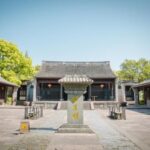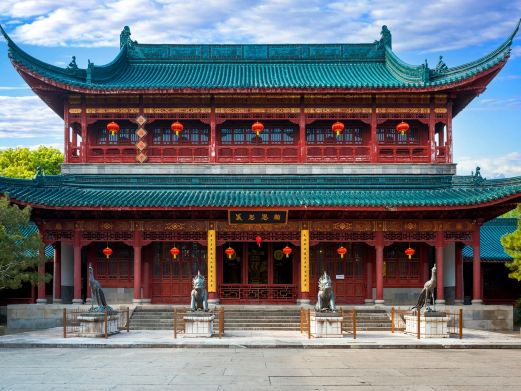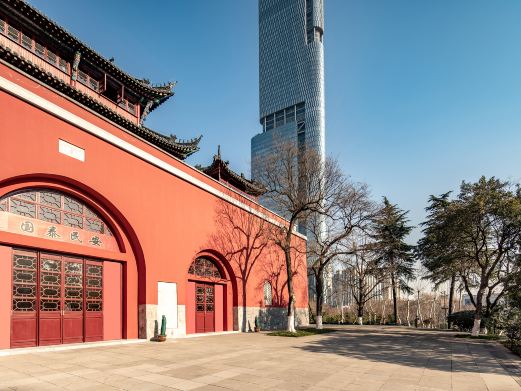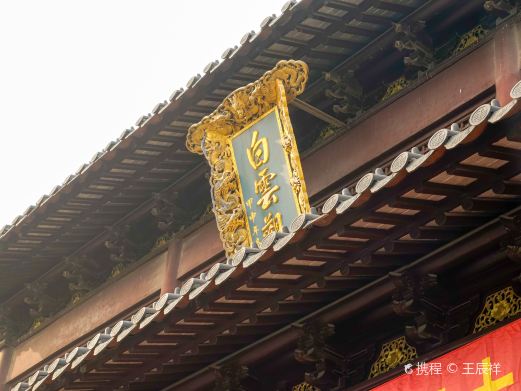The Purple Mountain Observatory was completed in 1934. It is located on the third peak of Purple Mountain in Nanjing City, Jiangsu Province. It is the site of the former ‘National Purple Mountain Observatory’ and is known as the cradle of modern Chinese astronomy. It is the main place for scientific research, observation, and popular science work in the history of Purple Mountain Observatory. There are many important astronomical heritages.
Some areas have been opened as public popular science service areas. Here records the history of the development of modern Chinese astronomy and inherits the spirit of scientific exploration. At the same time, it is also a famous scenic tourist destination in Nanjing. The Purple Mountain Observatory is a national popular science education base, a national key cultural relic protection unit, and one of the first ten science and technology tourism bases in China. Meteorite Museum Entering the scenic area gate and climbing up the steps is the meteorite exhibition hall. The exhibition area is about 200 square meters. More than 20 kinds of precious meteorites are on display. Tourists can get close to the extraterrestrial visitor – meteorites and learn and understand meteorite knowledge. Site of the Observatory The headquarters of the observatory, also known as the large observatory and the large equatorial instrument room, is a Chinese-Western style building designed in the early days of the observatory. The dome has distinct Western characteristics. The gate is an archway style covered with glazed tiles. There are three characters ‘Observatory’ written on the central plaque. It was laid on the winter solstice on December 22, 1933. A 600mm reflecting large equatorial instrument was placed. It was a relatively large telescope in the Far East at that time. Exhibition Area of Ancient Astronomical Instruments The exhibition area of ancient astronomical instruments is the essence of the observatory. There is an armillary sphere similar to a globe, also called an armillary sphere. It is studded with stars. It was replicated by the Qing government in 1903. There are armillary spheres and simplified armillary spheres whose shapes are like several circular orbits of planetary motions nested with each other. They were all cast in the orthodox years of the Ming Dynasty. There is a gnomon for measuring time by the shadow of the sun. There is also a horizontal theodolite for measuring coordinates replicated by the Qing government in the early 20th century. Meridian Instrument Room The meridian instrument room is the building that was completed at the beginning of the Purple Mountain Observatory. It is covered with a square glass movable roof and movable windows. It was laid on the summer solstice on June 21, 1932. The foundation inscription was written by Cai Yuanpei. There is a meridian instrument inside. It is an astrometric instrument for observing the moment when a star passes through the meridian. In the current meridian instrument room, there are also some exhibits related to timekeeping, such as a copper pot clepsydra, a steelyard clepsydra, and modern marine chronometers. Remains of Tianbao City Tianbao City is a fortress built by the Taiping Heavenly Kingdom. Now it has lost its former glory. There is a dome observation room on the top of the mountain. Climbing to the platform on the top of the building, you can overlook Nanjing City. Looking west is Xuanwu Lake. The view of the observatory is also very good. It is suitable for taking pictures and can capture more observatory buildings. In addition, there are graphic exhibitions and special exhibitions in the scenic area. The graphic exhibitions show the frontiers and major achievements of scientific research work and important history of the Purple Mountain Observatory. They show the basic knowledge of astronomy with astronomical photography pictures, physical objects, and models. The current special exhibition is an original astronomical oil painting exhibition.Opening Hours: 08:30-17:30 from April 1st to October 31st; 08:30-17:00 from November 1st to March 31st.

Preferential Policies: Children under 6 years old (including 6) or under 1.4 meters in height (excluding 1.4 meters) enter for free; minors aged between 6 and 18 years old (inclusive) enjoy discounted tickets; seniors aged 70 years and above enter for free; seniors aged 60 years and above (inclusive) with valid identification receive discounted tickets; undergraduate students with valid identification enjoy discounted tickets; disabled persons with valid identification enter for free; active-duty military personnel with valid identification enter for free.

Must-See Tips: 1. It takes approximately 30 minutes to walk from the Purple Mountain cableway’s pedestrian trail next to the Purple Mountain to reach the Purple Mountain Observatory.

2. The Purple Mountain cableway has a stop at Purple Mountain Observatory and ends at the Tou Tung Ling Station. Regardless of whether you get off at Purple Mountain Observatory or Tou Tung Ling, the ticket price is the same, 60 yuan for a single trip and 100 yuan for a round trip. The cableway operates from 9:00 to 16:00.









